Описание
Mercedes-Benz W210 Hardcover book (fragment of the text)
In June 1995, the Mercedes-Benz E-Class family received a new, memorable look, the main distinguishing feature of which was the “quartet” of four elliptical headlights.
This design solution was shown to the public for the first time at the 1993 Geneva Motor Show, during the presentation of the conceptual Mercedes-Benz coupe.
The new style was met with a significant response, and the company’s designers were awarded the prestigious Red Dot Award.
In total, the W210 family received more than 70 awards during 7 years of production: for passenger safety, design, environmental friendliness, and efficiency.
The new E-Class stood out not only with its striking design, but also with a large number of innovations. Among other things, the standard equipment now included electronic traction control system (ETS), electric front and rear windows, and an outside temperature indicator.
And devices such as a rain sensor, an air quality sensor for the climate control system, and the Parktronic parking assistance system were first introduced in the E-Class.
Per tradition, the W210 station wagon was introduced later than the sedan, in March 1996. It turned out to be very roomy: the volume of the cargo compartment with the seats folded down reached an impressive 1,975 liters.
The car’s standard equipment included a system for automatically maintaining the height of the body. As an option, a set of two additional seats was available, located in the trunk facing backwards and equipped with three-point seat belts.
Unlike its predecessor, the W124, the E-Class W210 did not have a coupe or convertible sibling. Instead, buyers were offered a new CLK family, which was based on components and assemblies of the smaller C-Class, but it also had the four-headlight design.
In January 2001, Mercedes-Benz introduced a new E-Class generation, the W211 series. This event marked the end of sedan production, with a production run of 1,374,409 units.
With average sales of over 200,000 vehicles a year, it established itself as the best-selling luxury sedan in the world. The share of the E-Class in this market segment averaged 24%, and it reached 40% in some countries.
In total, more than 1.6 million cars of the W210 family with the station wagon were produced over 8 years of production. As for the sedan, about 2/3 of the cars had a gasoline engine under the hood, and 1/3 had a diesel engine. For station wagons, this ratio was approximately 50:50.
A new concept of various styling options, successfully integrated in the “younger” C-Class family (W202), was now being offered to buyers of higher-class cars. The future owner had to choose one of three W210 versions: Classic, Elegance, and Avantgarde. In addition, a powerful sports modification from AMG was offered.
Compared to the base Classic, which had a deliberately restrained appearance, the Elegance offered a number of additional options. These included 10-hole alloy wheels and a rich decor: chrome trim on door handles, bumpers, and side panels. The top-of-the-range Avantgarde featured a grille with five horizontal chrome bars and body-colored B-pillars. The car inherited the chrome package from the Elegance version. Technically, the Avantgarde version featured a sports suspension, reduced ground clearance, and wider tires on 16-inch alloy wheels.
Read the continuation of Mercedes-Benz W210 story in the book.
Other books about history of Mercedes:
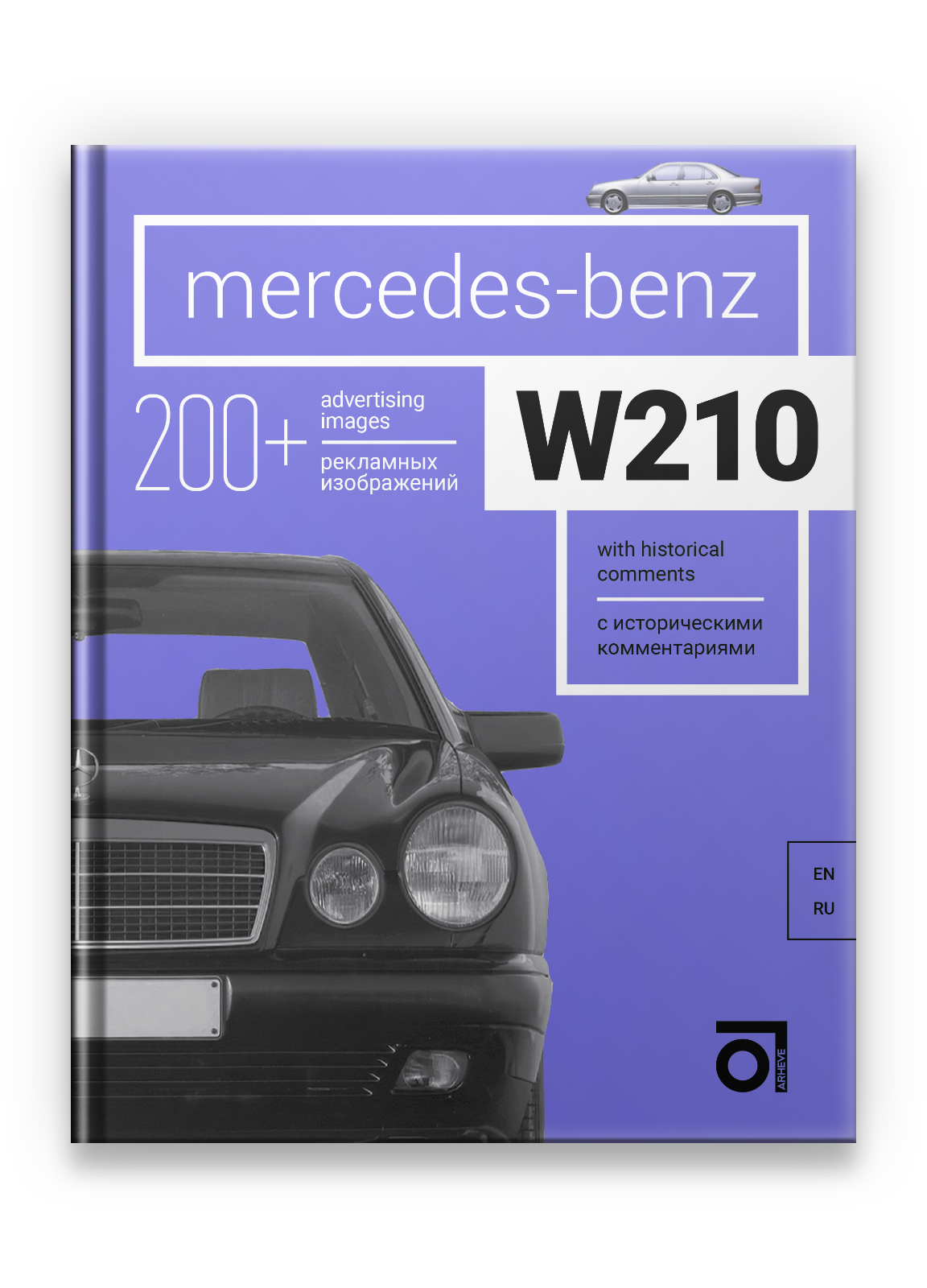
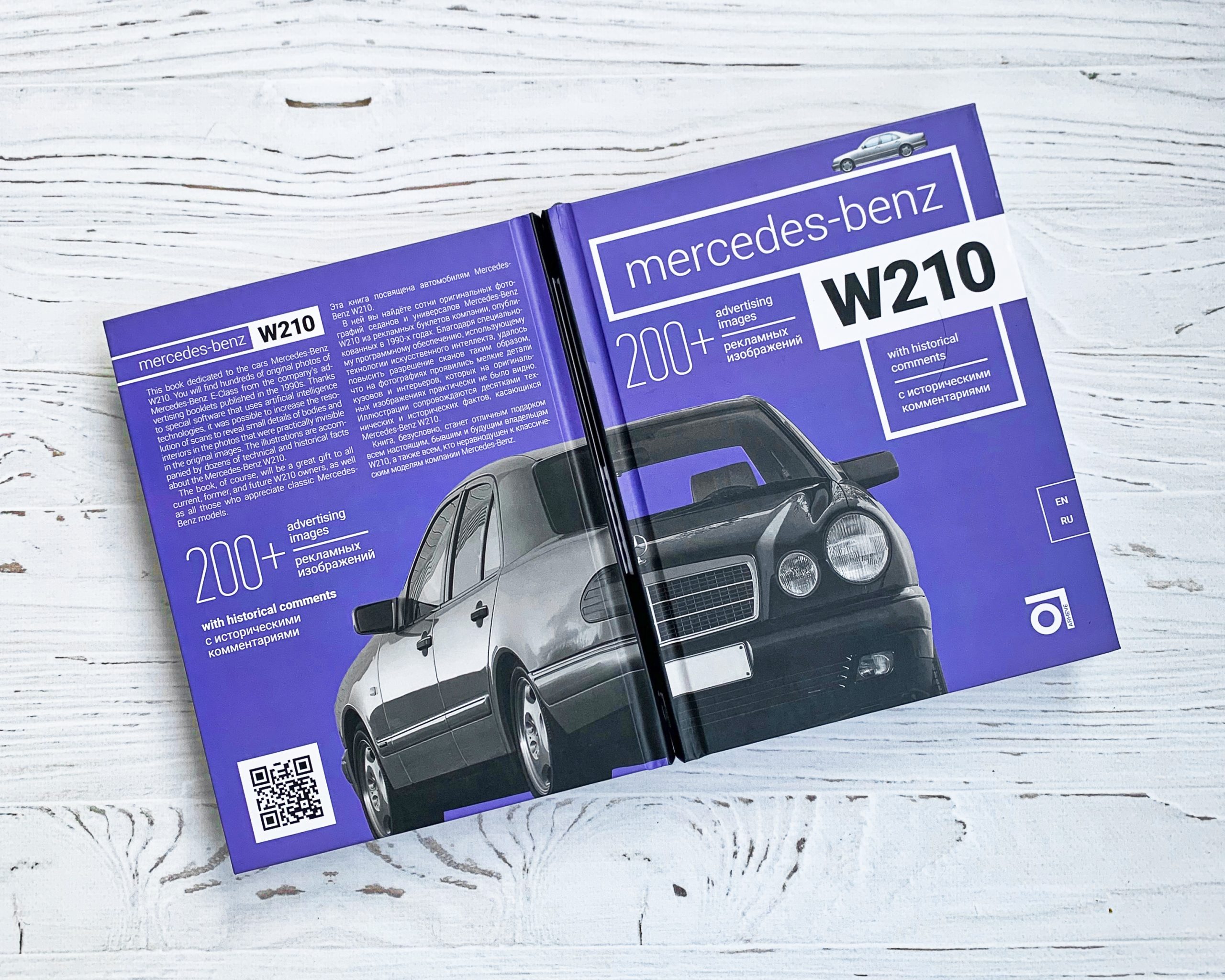
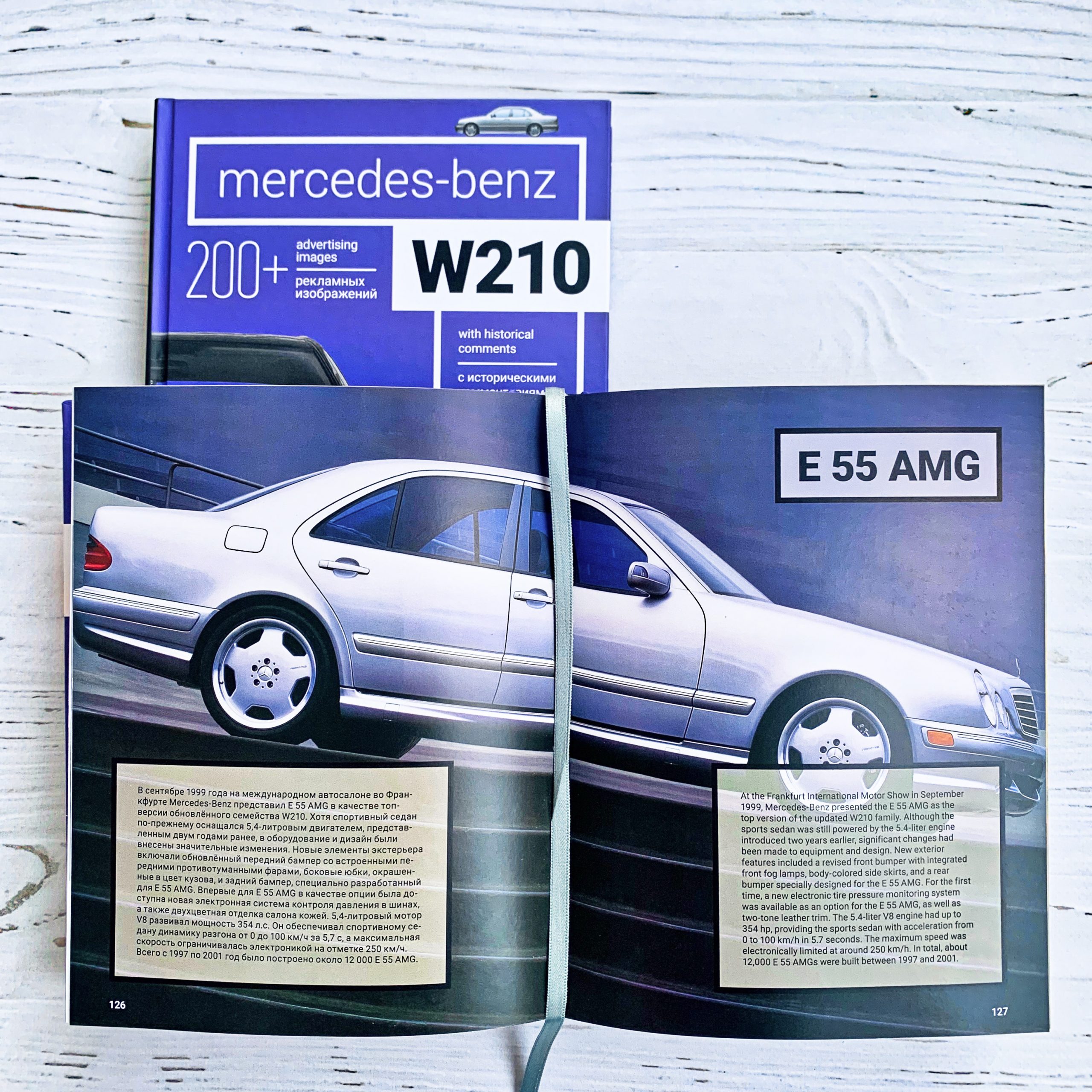
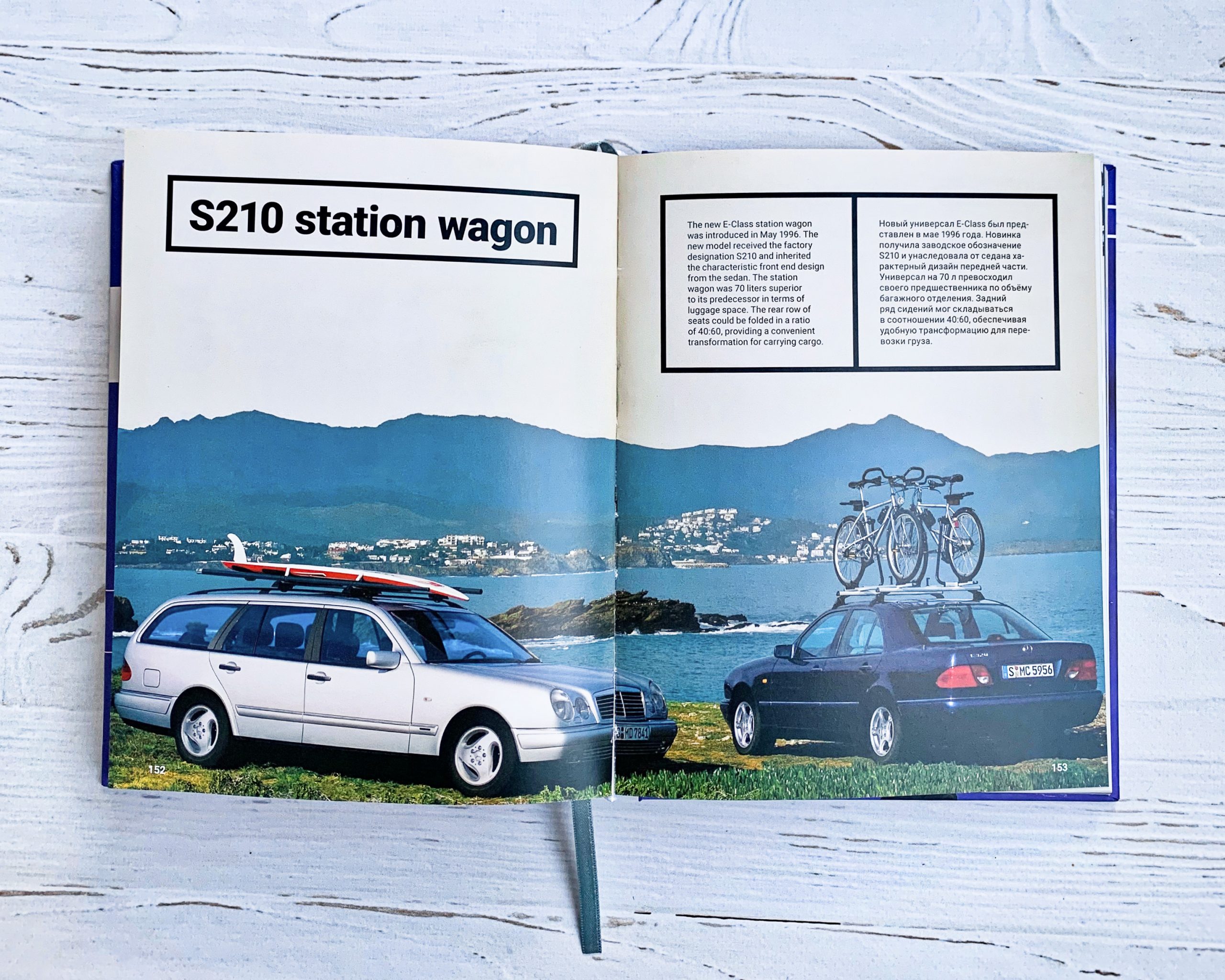
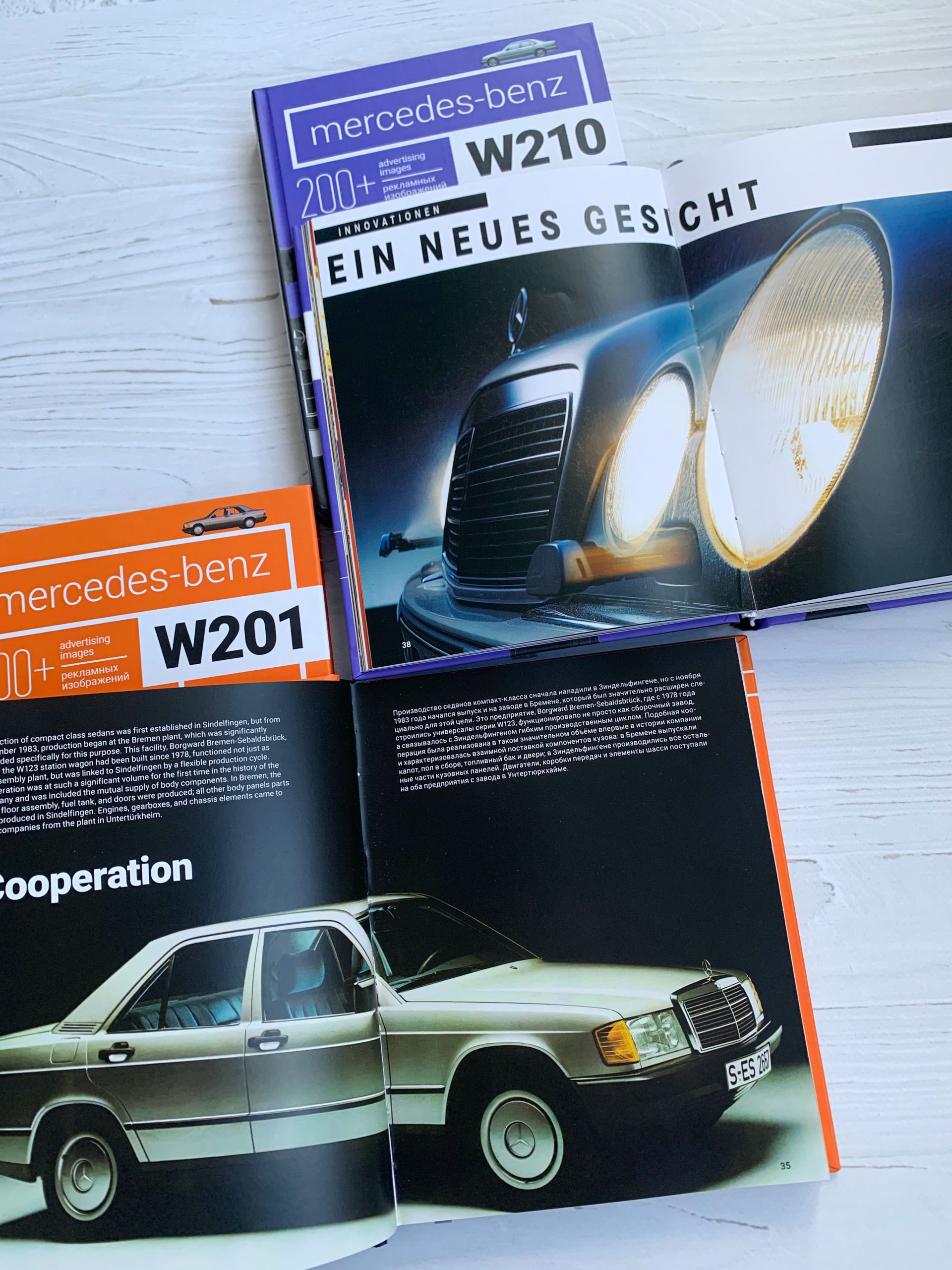
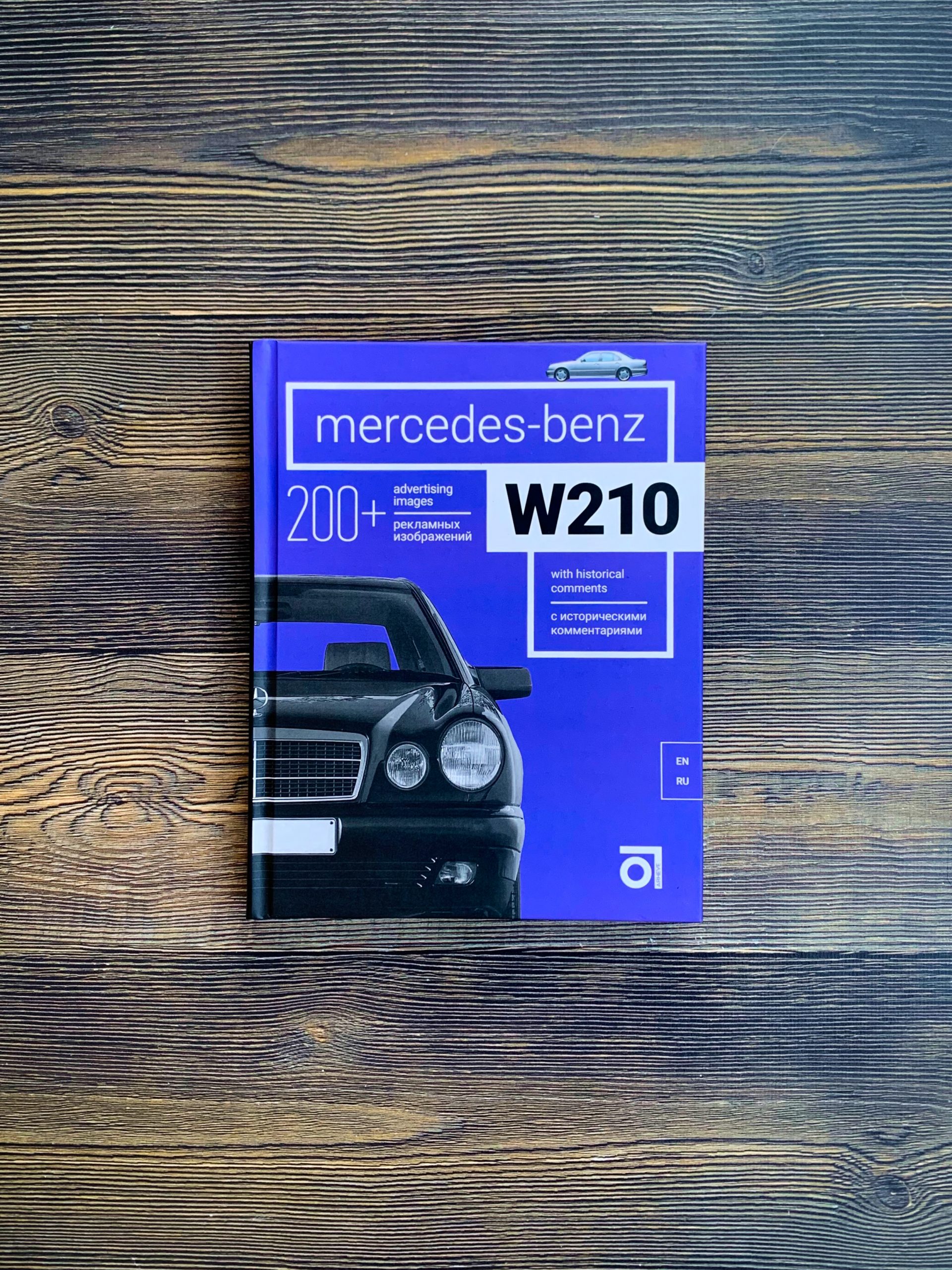
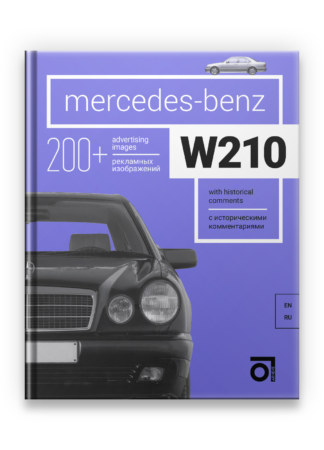
Отзывы
Отзывов пока нет.